Winter conditions provide extra tests for outdoor enthusiasts heading out in weather that is likely to be cold, wet and windy.
You need a waterproof jacket that’s going to give you confidence to keep comfortable in whatever meteorological situation you find yourself.
That, of course, will differ depending on whether you’re heading for the high mountains in full-on winter conditions with snow and ice, or a gentler stroll on lower levels.
The UK weather can throw some very unpredictable hazards at the walker or climber heading out in the winter months, so winter jacket fabrics tend to be a bit tougher, a bit thicker, and a bit heavier than that lightweight waterproof you slip in the rucksack for summer expeditions.
We put six jackets to the test, supplied by the brands as being suitable for winter use. These range from very inexpensive, very basic models to top-of-the-range technical jackets aimed at mountain professionals.
It’s important to note that only one of our tested jackets has insulation, so these shells are designed to be the outermost layer in your system, which should include base- and mid-layers and, if it’s very cold, a good insulating layer too.
Although we’ve given all the jackets a rating for warmth, this is not the primary role of the shell jackets, though they all provide windproofing which is an important element of keeping warm.
Berghaus Suilven Jacket
Colour: dark blue
Weight: 804g
Price: £220
Material: shell, 100 per cent polyamide (nylon); mesh lining, 100 per cent polyester
Waterproofing: two-layer Gore-Tex
Country of manufacture: Indonesia
Recommended wash: 30C non-biological powder
The Suilven is Berghaus’s four-season jacket, made from tough-feeling fabric using two-layer Gore-Tex, with a mesh backing.
As with most of the winter jackets, the material is quite stiff and rustly and is fairly weighty, with the jacket edging over 800g in medium size.
It has extra zips and cuff fasteners to enable Berghaus InterActive fleeces (not supplied with the Suilven) to be attached for warmth.
Weatherproofing has been well thought through in the Suilven, with the main zip protected by double storm flaps with hook and loop fastening strips.
The hood, which can be rolled up into the jacket’s collar, has a volume adjuster and two adjusters at the sides to ensure a good fit, and the whole thing has a flap coming across the front fastened again with hook and loop patches.
However, even with the hood tightened to the fullest extent, it didn’t turn well with the head, so vision sideways was not good with the hood up. This is likely a result of the decision to allow the folding away of the hood rather than having a permanent design, though for winter we’d always have the hood out available for quick deployment anyway.
The chin area is protected from the zip by softer material which also doubles as a cover for InterActive fleece zips and felt comfortable in use. The hood does have a wired peak.
The sleeves are articulated and moved well when active on the hill, and the whole jacket is cut slightly longer to give a bit of extra protection in the cold and wet of a British winter.
The Suilven has two large patch pockets which seem to be fashionable at the moment. They’re not quite big enough to take an OS map, but they are well protected with both a zip and storm flap. However, with a rucksack on, access to the patch pockets is restricted, though just about possible, as they tend to be just south of where the hip strap crosses.
There are two other pockets accessible from the outside, a largish one on the left, again protected by zip and storm flap, and this one is big enough to take a laminated map. There’s also a smaller pocket on the opposite side, which will take a GPS unit or smartphone.
Inside the Suilven, there is also a large mesh pocket which will take a map.
The jacket waist can be cinched in using the half drawcord, and there is also a hem drawcord.
The Berghaus Suilven is a good all-rounder. It lacks some of the refinements of a true mountain jacket; it has no pit zips for ventilation and the two-layer Gore-Tex does not offer the enhanced breathability of the new Gore-Tex Pro.
However, for a reasonable price, you get a well designed garment that also looks good on the street. Wear the Suilven and you won’t look out of place on the High Street, the hill or on a stroll in the snow. The jacket will keep out the worst of the UK winter weather in all but extreme conditions.
Waterproofness 24/30
Breathability 21/30
Warmth 2/5
Features 3/5
Quality 7/10
Value for money 14/20
Total score: 71/100
Craghoppers Kiwi Jacket
Colour: red
Weight: 986g
Price: £90
Material: shell, 100 per cent polyester; lining, 100 per cent polyester
Waterproofing: AquaDry
Country of manufacture: China
Recommended wash: 30C waterproof cleaner or pure soap
Craghoppers has upgraded its AquaDry fabric which the new Kiwi features. It now offers waterproofing to a hydrostatic head of 15,000mm more than twice the previous material’s rating of 7,000mm.
While the jacket will keep out a good deal of rain, its waterproofing isn’t up to the level of Gore-Tex and some of the more expensive materials, but for £90 you get a reasonable all-round jacket that will serve well on winter outings and hillwalking if not pushed to extreme conditions.
The reduced breathability over some of the more expensive jackets was noticeable, with a build-up of perspiration when working hard.
The outer fabric feels tough and again is quite stiff and rustly. The main zip has double storm flaps, one behind and one in front of the zip to help keep out wind and rain.
The hood is detachable and is held on by a zip and hook and loop patches. It doesn’t have a volume adjuster but shockcords each side enable the hood to be cinched in against the wind and the rain, though this tends to pull the stiffened peak quite a way down over the eyes – good for keeping driven rain and snow out of the eyes, but not good for visibility when trying to look up.
The hood doesn’t turn with the head.
The sleeves aren’t articulated, but don’t hinder movement too much when scrambling. The cuffs have hook and loop strips to adjust.
The Kiwi is well endowed with pockets, with two large gusseted patch pockets at hip level which means access is difficult when wearing a rucksack with hip belt. The two patch pockets don’t have zips but do have flaps with press studs, but water ingress is likely.
Behind the two patch pockets, at hip level, are twin ‘hidden’ zipped handwarmer pockets which are accessible when wearing a hip belt.
Inside the jacket, which has mesh lining, are a zipped pocket large enough to contain an OS map and a smaller one, which will take a smartphone or GPS unit. Both of these are of solid material rather than mesh which again limits the breathability of the jacket at chest level.
The waist has drawcords with adjusters inside the jacket and the hem also has drawcords.
The Kiwi is also available in a longer version, though ours was one of the longest in the test anyway. It also has zips to incorporate Craghoppers’ 3in1 microfleeces.
We wouldn’t recommend prolonged journeys into the hills in the Kiwi, but for general use its tough fabric at a very affordable price should appeal to those who don’t demand maximum breathability but want to keep out the wind and rain.
Waterproofness 22/30
Breathability 18/30
Warmth 2/5
Features 3/5
Quality 6/10
Value for money 16/20
Total score: 67/100
Helly Hansen Odin Mountain Jacket
Colour: orange
Weight (medium, including powder skirt): 688g
Price: £500
Material: shell, 100 per cent polyamide (nylon); lining, 100 per cent polyester
Waterproofing: Helly Tech Professional laminate plus DWR treatment
Country of manufacture: China
Recommended wash: 40C mild soap
The Odin Mountain Jacket is a serious piece of kit that will keep the wearer protected in the worst conditions.
This Helly Hansen jacket is aimed at active wearers likely to spend prolonged periods in the mountains in winter. Its light weight belies the toughness of the fabric, which is much softer to the feel and less rustly than most others in the test.
Helly Tech Professional is rated at 25,000mm waterproofness and 22,000g breathability, which puts it among the best performers for high energy outings in dire weather and so it proved on our test.
We had the Odin out in some pretty foul weather in the Lake District, ranging from cold nights to all-day torrential rain and it didn’t let us down.
The jacket is designed with mountain guides in mind and also has features for skiers such as a Recco patch which reflects radar signals from rescuers in the case of an avalanche, though as far as we know, only the Nevis Range in the UK uses the system.
The Odin jacket, though fully waterproof, is also a stretch jacket, which means you never feel hindered while scrambling about or on that awkward climb in horrible conditions.
The jacket’s length is generous enough to protect without sacrificing mobility while active.
The design is fairly minimal, with a chunky main zip backed by a storm flap and the two chest pockets also have matching red zips. If you’re not using them to store things, the pockets are mesh backed so can be opened for venting.
Disappointingly, the chest pockets aren’t big enough to pass the OS map test, but two lower zipped pockets will accommodate the map, though these are covered by a rucksack hip belt when wearing a pack.
If you’re not using the lower pockets to stash gear, they can be used for handwarming. The only other pocket is an odd little one on the left sleeve which has a transparent window. Useful for a ski pass perhaps, but not a lot else apart from perhaps a compass.
The sleeves are well shaped for activity and allied to the stretchiness of the fabric allow for unhindered use of the arms if scrambling, climbing, using an ice axe or just waving to your friend.
Cuffs are adjustable by hook and loop fastenings. There are long pit zips to aid ventilation when working hard.
The hood is well designed and will easily accommodate a climbing or ski helmet.
The volume adjuster allows for the hood to be pulled snug to the head and it then turns nicely with the head to allow for good visibility. Two further drawcords allow the hood to be cinched snug against the face in driving wind or snow.
The Odin Mountain Jacket comes with a detachable powder skirt which will also zip into Helly Hansen’s matching trousers to complete the weatherproofing in winter conditions.
This Helly Hansen jacket was the most expensive in the test, but afforded great confidence in bad weather on the mountains. We scrambled up and down rocky sections, wild camped, endured torrential rain and driving winds, all in cool conditions, and we never felt the Odin Mountain Jacket would let us down.
Waterproofing was excellent and breathability was also very good. A fine piece of winter kit.
Waterproofness 28/30
Breathability 27/30
Warmth 2/5
Features 3/5
Quality 9/10
Value for money 12/20
Total score: 81/100
Result R155X Waterproof 2000 Pro-Coach Jacket
Colour: black
Weight: 384g
Price: £28
Material: shell, 100 per cent polyester; lining, 100 per cent polyester
Waterproofing: polyurethane coating
Country of manufacture: not stated
Recommended wash: 30C, no fabric conditioner
The Pro-Coach is the lightest and cheapest jacket in our test, but don’t expect to feel comfortable on the mountain in driving rain in this budget top.
Waterproofing comes from a polyurethane coating, which offers only 2,000mm of protection, and its breathability is poor too, and activity in the jacket soon leads to clamminess.
The material is shiny black ripstop polyester and is cut quite baggily, which means wind tends to creep in when you least want it. A shockcord adjuster at the hem helps a little, but not much.
Sleeves, which have hook and loop fastenings at the cuffs, ride up a little when reaching up and the hood, which doesn’t have a stiffened or wired peak, doesn’t have a volume adjuster or any cords to tighten, so tends to blow down in strong wind.
The hood can be rolled up and secured folded up using a hook-and-loop fastening flap. Although the specs mentioned shockcord adjustment for the hood, there was none in evidence on our sample.
The main zip has a front storm flap, and the jacket has a mesh lining.
Two zipped, mesh handwarmer pockets are provided.
There is a little reflective piping around the waist of the jacket, which is made partly from recycled material. The fabric didn’t offer a great deal of resistance to abrasion damage.
Although it’s cheap and light, the Result R155X Waterproof 2000 Pro-Coach Jacket isn’t a serious contender for a winter excursion into the great outdoors. It’s not waterproof or breathable enough for anything approaching a decent outing on the hills.
The hint is in its name: the jacket is OK for standing on the touchline in a shower while shouting at the kids’ football.
Waterproofness 10/30
Breathability 10/30
Warmth 1/5
Features 1/5
Quality 2/10
Value for money 15/20
Total score: 39/100
Sherpa Adventure Gear Lakpa Rita 3-Layer Jacket
Colour: red
Weight: 446g
Price: £260
Material: 100 per cent nylon
Waterproofing: eVent laminate plus DWR coating
Country of manufacture: Nepal
Recommended wash: 30C cool wash
The Sherpa Lakpa Rita jacket is the lightest of the serious contenders in the test, but still offers protection for the hills in a UK winter.
The outer fabric is a ripstop-patterned nylon which feels tough and stood up to our testing unscathed.
Waterproofing is from eVent, which has a reputation for good breathability, which was borne out when working hard uphill in the jacket. Ratings are 20,000mm for waterproofing and 20,000g for breathability.
The jacket is cut to an athletic fit and is clearly aimed at active users wanting protection from the elements.
The main water-resistant zip has a storm flap backing to help keep out the weather. The sleeves are nicely articulated and have reinforced panels on the forearms. Cuff adjustment is by hook and loop strips. There are no pit zips for ventilation, however.
The jacket has four outer pockets, all of which are accessible when wearing a rucksack with hip belt.
The two, lower, handwarming pockets are set quite high to clear a belt and are big enough to take an OS map.
The two upper pockets are smaller, and will accommodate a mobile phone or GPS unit. All have weather-resistant zips.
The hood is good, with one adjustment cord at the back which cinches in the sides at the same time as adjusting volume. The hood turns with the head though, when fully tightened, restricts sideways head movement very slightly.
All the zips and the volume adjuster are protected from dripping rain by little cowls. This does make them slightly fiddly to get at when using thick gloves.
The hem drawcord adjusters are covered by a little ‘alcove’ at each hip to stop them snagging.
For such a lightweight jacket the Lakpa Rita offered good protection in cool, wet winter conditions. Nice styling and minimalist approach makes the jacket an attractive prospect at the price.
Waterproofness 25/30
Breathability 25/30
Warmth 3/5
Features 2/5
Quality 8/10
Value for money 15/20
Total score: 78/100
Sprayway Hydrolite 3 in 1 Jacket
Colour: blue
Weight: 1,022g
Price: £149.95
Material: shell, 95 per cent nylon; 5 per cent Elastene. Inner: 100 per cent polyester with 100 per cent polyester insulation
Waterproofing: HydroDry Flex material
Country of manufacture: China
Recommended wash: 30C fluorocarbon cleaner and proofer
While the Berghaus and Craghoppers have the facility to zip in a microfleece, the Sprayway Hydrolite actually came with one attached, hence, the 3 in 1. You can use the two together, or each separately.
The waterproof outer jacket is made from Sprayway’s HydroDry Flex fabric, a 2.5 layer construction – the strange outdoor gear way of saying it has a fabric outer, breathable laminate layer which is then in turn faced on its inner surface by a printed pattern.
Used on its own, the waterproof outer gave a reasonable performance, and is rated at 5,000mm hydrostatic head and 5,000g breathability – in practice this means any vigorous exercise led to a fair amount of perspiration that took a while to clear.
A 5,000mm head will keep out a reasonable amount of rain, but prolonged downpours may start to penetrate, particularly in strong winds.
The Hydrolite’s waterproof material is fairly stiff and noisy, as with many other winter jackets in this test. The main zip has twin narrow stormflaps which close over the front of it, and also has a rear flap to help keep out the weather.
There are two massive zipped hip pockets with mesh lining, which could be used to help ventilate if not being used to carry gear. A laminated OS map easily fits in the pockets. However a rucksack hipbelt cuts off access to the pockets.
A zipped mesh pocket within one of the larger ones contained a mesh stuffsack in which to pack the jacket.
Inside the jacket is a small mesh pocket with hook and loop fastening, big enough for a GPS unit or smartphone.
Sleeves have hook and loop adjusters at the cuff.
The hood is fairly small and when the volume adjuster is fully tightened, the wired peak is fairly well back on the head. There are side adjusters too and when the hood is cinched in to the head, it works well, turning when the head is turned. There is a soft chin guard too.
The inner jacket can be zipped out and worn separately. It uses 80g/sq m polyester insulation so shouldn’t lose its warmth when wet and provides a basic if not particularly stylish separate insulated top if required.
It has two zipped handwarmer pockets and the cuffs are elasticated, though they’re a little loose round the wrist.
The inner uses its main zip to attach to the outer waterproof, and there are also press-studded loops at the collar and in each sleeve cuff to keep it in place.
We view the Sprayway Hydrolite 3 in 1 Jacket as a good all-rounder, providing waterproofing and warmth as the temperature dips, but it’s not really at home in severe mountain weather.
It’s fine on lower-level walks, for general use around town and for an occasional foray on to the hills, but its poorer breathability and lower-rating for waterproofness make it more suited to less strenuous and extreme outings.
That said, it was the warmest on test, thanks to the insulated inner, which gives it a useful versatility if you’re prepared to disassemble and reassemble the layers if the temperature changes. The pay-off is its weight, the heaviest in the test, and the fact it doesn’t pack down very small.
Waterproofness 21/30
Breathability 17/30
Warmth 4/5
Features 3/5
Quality 7/10
Value for money 15/20
Total score: 67/100
The Helly Hansen Odin Mountain Jacket was easily the best in our test, which is not surprising given its premium price. The jacket is well designed, uses top-quality materials and performs excellently. It will cope with winter conditions you’re likely to encounter both in the UK and further afield, for instance in Alpine mountaineering.
It’s possible the bright tangerine fabric will get dirty if you’re scrambling around on typical British mountains. If that’s a worry it’s also available in black.
This latest update to a proven performer puts the Odin at the top of our pile for winter waterproofs.
Another impressive performer was the Sherpa Adventure Gear Lakpa Rita 3-Layer Jacket. Its eVent fabric kept out the rain and had the edge over many of the samples for breathability. If you’re after a no-nonsense, minimalist waterproof, we can recommend the Sherpa jacket.
The best of what we would term ‘general purpose’ jackets was the Berghaus Suilven Jacket, with its Gore-Tex membrane and nice styling, though it is very rustly in use and pricier than the Sprayway and Craghoppers jackets.
Anyone on a very tight budget might want to look at the latest incarnation of the Kiwi jacket, though don’t expect top-level performance. For versatility and warmth in a non-mountain jacket, the Hydrolite 3 in 1 is hard to beat.
Best in test: Helly Hansen Odin Mountain Jacket
Recommended: Sherpa Adventure Gear Lakpa Rita 3-Layer Jacket
Recommended: Berghaus Suilven Jacket
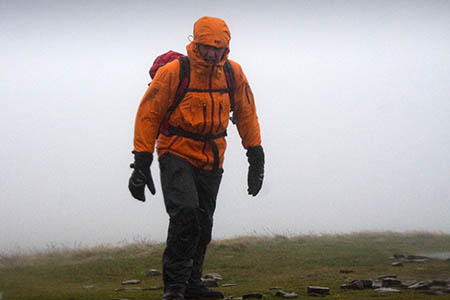
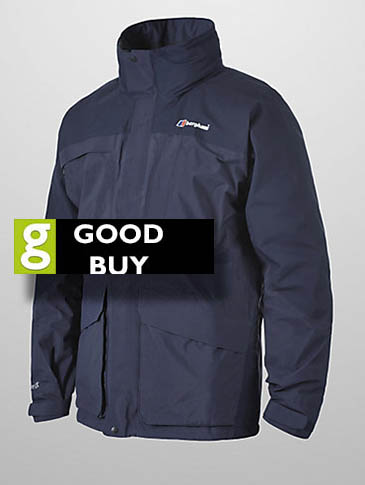
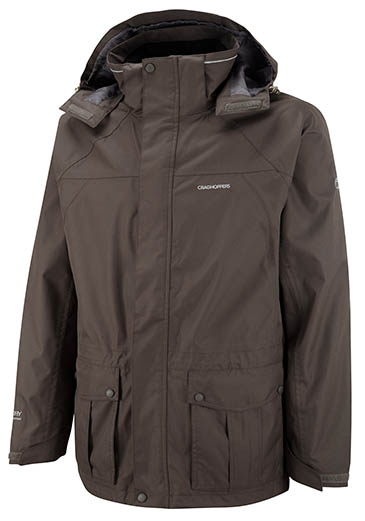
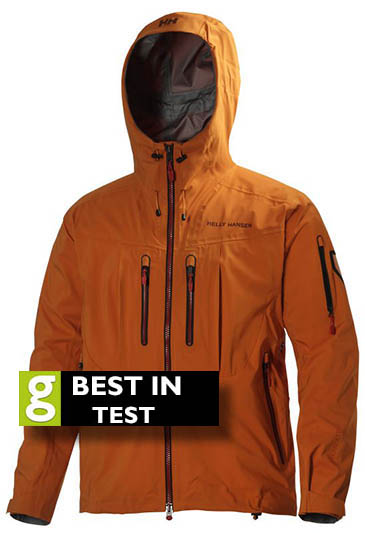
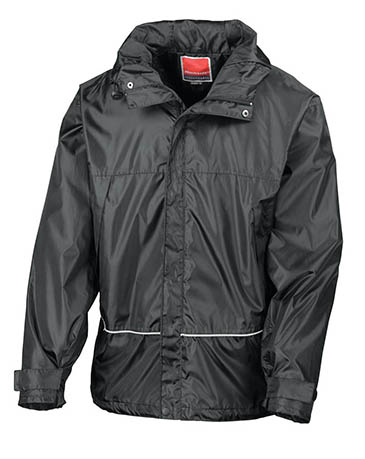
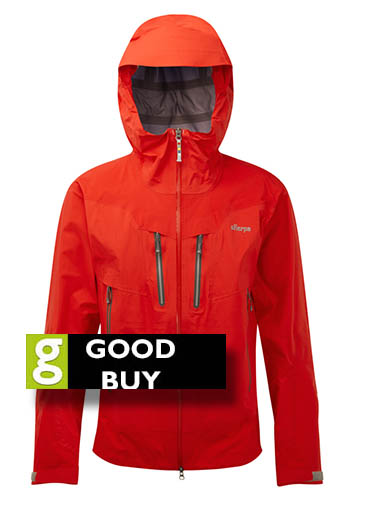
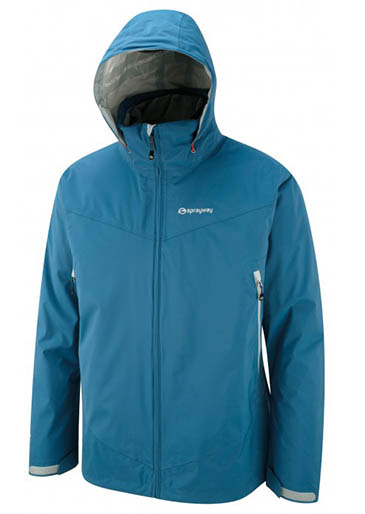
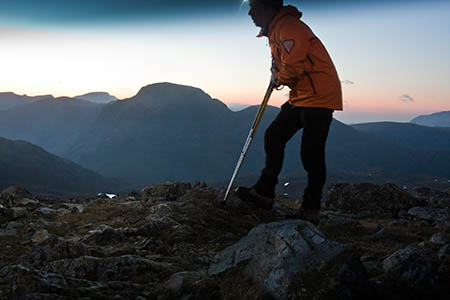
Dave Jones
29 November 2013For winter use I reckon the Keela Munro hits the spot - fully featured and terrific value for money. Heavy, so you'll need to wear it rather than carry it.
Dave
Jon
30 November 2013Worth also looking at the Quechua Forclaz 400 jacket from Decathlon. It uses their own Novadry material which is pretty much identical to GoreTex ProShell and eVent but a tiny fraction of the price.
In my experience none of the GoreTex type materials retain their performance for more than a couple of years of use anyway, no matter what you try to do about it: first they lose their breathability and eventually their waterproofing as well. At least if you only spend £60-£70 you can afford to buy another every year or two, less appealing if you spent £300-£500!
OutdoorsGuy
21 December 2013Paramo, (standard weight).
Choose your style.
;D